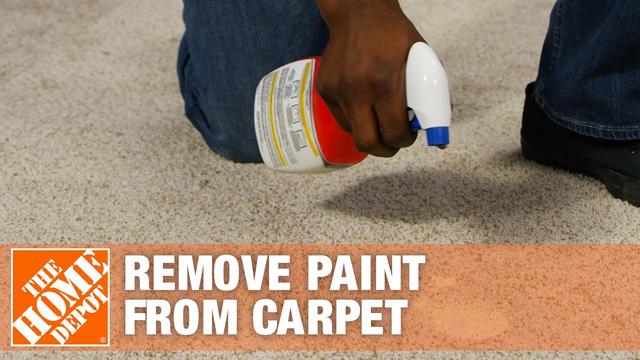How to get acrylic, latex, or oil-based paint stains out of carpet
Rugs are probably one of the things in a house that experience the most wear, tear, and mess, with people tramping across them on a daily basis and sometimes even "decorating" them with accidental spills. Some messes are easy to clean up and others, like paint, might take just a bit more care and elbow grease.
If the idea of dripping paint on your carpet fills you with panic, read on to learn exactly how to get that paint out, with pro tips from home improvement & renovation contractor Andrew Wilson of Contractor Advisorly, interior designer and home improvement expert Gian Moore of Mellowpine, and cleaning expert Dean Davies of Fantastic Services.
Before you get started
First of all, it's important to take note of exactly which type of paint is on your carpet, as different paint varieties have different cleaning requirements.
How to get rid of wet acrylic paint in carpet
Because acrylic paint is chemical-based, some DIYers assume that it won't respond to cleaning procedures. Luckily, acrylic paint can be removed from carpet, but you may need to make a special trip to the store to grab a bottle of acetone. Acetone, which is a chemical solvent, is easy to find at paint and hardware stores, and you can even pick it up at many pharmacies in the form of nail polish remover or rubbing alcohol (just be sure to read the label to make sure that acetone is the primary ingredient).

How to get rid of wet water-based/latex paint in carpet
Because latex paint is water-based, it can often prove easier to clean than its oil-based or acrylic equivalents. Water is the main solvent for these paints, so it naturally responds to cleaning solutions that are also made with water. To clean a latex paint spill, you'll need dishcloths or rags, mild dish soap, plenty of water, and a vacuum.
How to get rid of wet oil-based paint in carpet
"Oil-based paint is the hardest type of paint to remove from the carpet," says Wilson. "Oil and water repel each other and oil-based paint has a thicker texture, so it will on average take longer than any of the other types and will require a more thorough cleaning." The best cleaning process for oil-based soap includes paper towels, hot water, dish soap, a small sharp knife (or a razor or sharp tweezers), and a handheld steamer.
How to clean dry paint from the carpet
Once a paint spill dries and hardens, removal becomes trickier. Fortunately, dry paint isn't a lost cause. In order to lift these stains from the carpet, you'll want to start by using a steamer to rehydrate the paint enough to lift it from the fibers, but not so much that it sinks in and saturates the carpet.
Then, use a sharp knife or razor to scrape as much paint as possible from the carpet fibers. Once you've done that, use the steamer to moisten the stain, then start blotting with paper towels or rags.
Since acrylic paint is chemical-based and dries very quickly, Moore recommends soaking a cloth in acetone, or using an eyedropper to apply it directly and help remove the stain. The steam-scrape-blot process can then be repeated until the dried paint vanishes.
Paint removal tips and tricks
Don't scrub the stain. It may feel tempting to take a scrubbing brush to the stain, but Wilson tells us that this will do more harm than good. "When you scrub the paint with the intention of trying to remove it from the floor, it actually causes the paint to be absorbed further by the carpet fibers," he says.
Some types of carpet should be professionally cleaned at all times. Our experts encourage carpet owners to invest in semi-regular professional cleanings as a general rule, but when it comes to specific carpet types, Moore says that synthetic carpets (any carpet made with chemical-based materials, like polyester or nylon) always needs to be professionally cleaned.
"They are generally treated with stain repellents on the surface, says Moore. "And when the carpet is cleaned using detergents or any carpet cleaner, the layer of the stain repellent gets diluted. Its capability to prevent soiling of the carpet is reduced, so the carpets get dirtier faster."
Wilson also states that wool carpets should be professionally treated, given they require adequate cleaning to maintain longevity. Wool can be very easily damaged by the chemicals in most stain removers.
Preventing paint stains is easier than you may think. Of course, a paint-splatter mistake can happen at any time to anyone. But if you take some time to lay down tarps and tape off trim, you'll set yourself up for a higher likelihood of a spotless carpet when a painting project is done.
Insider's takeaway
It's never fun to realize that you dripped a bunch of bright wall paint onto the carpet, but if you know which type of paint you're dealing with and how to attack the stain, then you'll be able to DIY this cleaning process, saving you lots of time and money.







